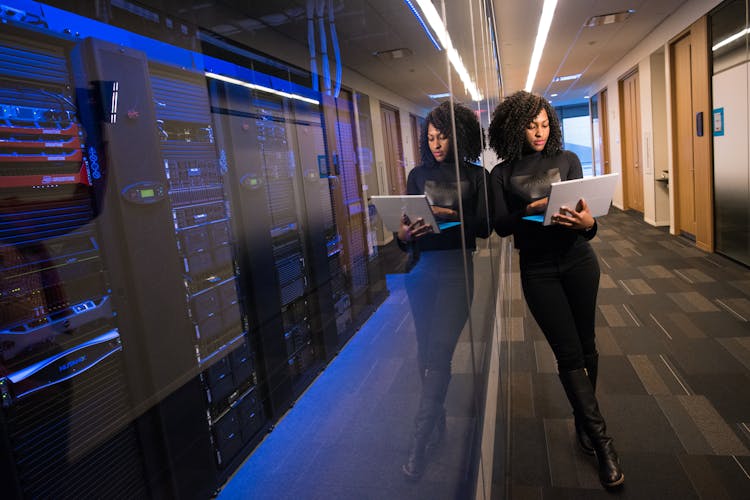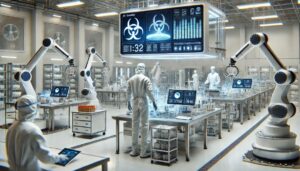Today’s data centers are highly complex systems that serve as the backbone of the internet, cloud computing and enterprise services. However, designing one with artificial intelligence (AI) in mind brings formidable challenges. This software has the power to upgrade how facilities operate significantly, but integrating it is forcing data center owners to consider a few new factors in their builds.
Larger Cooling Needs
“AI enhances digital data center security by introducing sophisticated anomaly detection and automated threat response mechanisms.”
However, it requires a lot of energy and information to run, making cooling even more critical than before.
Data centers will need to switch from air-based cooling to something a little stronger, such as liquid or immersion cooling. The former utilizes an enclosed cold liquid to cool down servers radiantly and drop facility power usage by 50%, while the latter creates a closed-loop system that boils water, condenses it and rains it down for the same effect. Incorporating these requires data center operators to plan out accommodating space ahead of time, so existing ones will have to spend big to make the change.
To avoid reconstruction, tech giant Microsoft has created a custom server rack that addresses cooling needs and space. Its Maia 100 AI chips were designed around air cooling, but the company found that wasn’t enough. Rather than overhauling the entire center to add massive coolers, it created a “sidekick” that sits within the rack. Liquid cooling already allows data centers to place racks closer together, but this advancement could make smaller facilities the norm.
Additionally, physical server security will need to keep cooling in mind. Designers can’t rely on thick walls of metal or concrete to safeguard the delicate machinery because it will overheat. Expanded metal cages promote air circulation via the diamond-shaped holes in the material and are very easy to move for improved scalability.
Reduced Equipment Redundancy
Artificial intelligence significantly reduces equipment redundancy in data centers by enabling smarter resource allocation and predictive analytics. AI can accurately forecast capacity and performance needs by analyzing data patterns and operational demands. It allows the optimization of existing infrastructure rather than the traditional approach of over-provisioning for peak demand.
This predictive capability ensures data centers can scale resources up or down as necessary, effectively minimizing the need for redundant equipment. By doing so, AI streamlines design and reduces unnecessary capital expenditure.
It also contributes to more sustainable data center practices by lowering electricity consumption and reducing electronic waste. This approach represents a shift toward efficiency and leverages technology to meet current needs.
Importance of Quality Materials
Because AI has much greater operational requirements, it demands updated housing. It will place much greater loads on data centers that push their power draw and cooling systems to the limit. Thus, facility owners must avoid cutting design corners with cheap materials to save money — they risk frequent downtime for maintenance and unnecessary spending on replacements otherwise.
Additionally, using high-quality components can promote better air quality. Products that aren’t up to the task could emit dangerous gases and particles in extreme heat that damage critical pieces of the server. AI will force those who want to go the cheaper route to think twice in the name of longevity during the design process.
The Future of Data Centers with AI
Adopting AI in data centers presents challenges, such as the initial cost of implementation, the complexity of integrating AI systems and the need for skilled personnel to manage these advanced technologies. In response to these complexities, for example, the U.S. mandates that government bodies hire chief AI officers to ensure ethical use and compliance with AI technologies.
Despite these hurdles, the outlook remains optimistic. Artificial intelligence promises to revolutionize data center operations, leading to more sustainable, efficient and resilient infrastructures. Leveraging its potential to optimize energy use, automate maintenance, and enhance security achieves unprecedented operational efficiency and reliability. It sets a new standard for the modern world’s infrastructure.
Exploring the Impact of AI on Data Centers
Organizations must delve deeper into the transformative power of AI in data center design by exploring the latest AI technologies, participating in relevant discussions and keeping abreast of industry developments. This active engagement will enhance their understanding and empower them to contribute to the evolving landscape of data center innovation.










